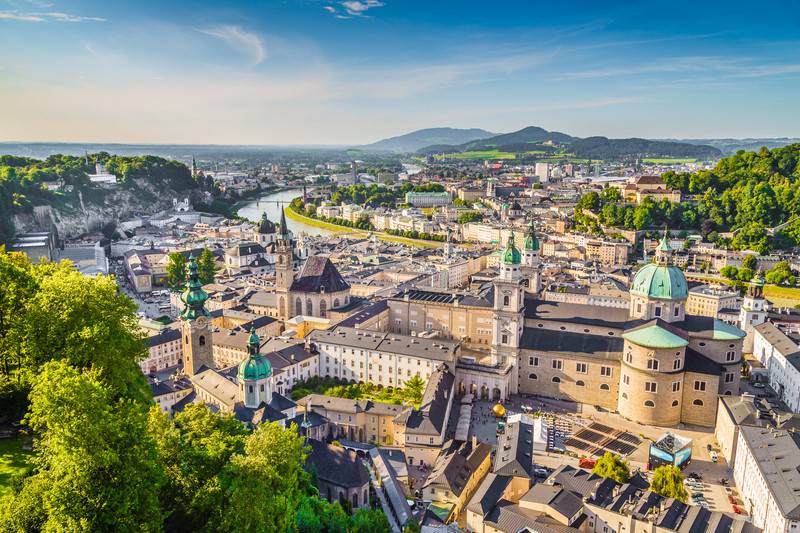Explore scenic routes, cultural gems, and local tips for an unforgettable drive in Salzburg. Your ultimate guide to road tripping bliss awaits!
Austria is a picturesque alpine country with stunning landscapes, charming villages, and rich cultural heritage, whether you're hitting the graceful streets of Vienna or the hills above Salzburg. While exploring this beautiful country, one of the best ways to immerse yourself in its beauty is by hitting the open road. Austria offers a well-maintained road network that winds through breathtaking mountain passes, serene lakes, and historic towns. Let's take a virtual journey through the enchanting roads of Austria, providing valuable tips and insights for an unforgettable driving experience. In this blog, we will answer all your questions about driving in Austria, covering everything from road rules and speed limits to parking and renting electric cars. So buckle up, and let's hit the road!
Is driving in Austria Easy?
Driving in Austria is generally a pleasant experience, thanks to the country's well-maintained road infrastructure, efficient traffic management, and driver-friendly regulations. The extensive road network ensures excellent connectivity between cities, towns, and scenic regions. However, as with any foreign country, you must familiarize yourself with the local driving rules and regulations.
What is required for driving in Austria?
You'll need a valid driver's license issued in your home country or an international driving permit (IDP) to drive in Austria. Ensure that you carry your license and vehicle registration documents with you at all times. Additionally, it's mandatory to have valid third-party liability insurance coverage for your vehicle.

Do you need a vignette to drive through Austria?
Yes, suppose you plan to drive on Austria's motorways and expressways (Autobahnen and Schnellstraßen). In that case, you must purchase a vignette—a toll sticker that allows you to use these roads. The vignette is available in various durations (10 days, two months, or one year). It can be obtained from border crossings, petrol stations, and online vendors.
Does Austria have speed cameras?
Austria has a comprehensive network of speed cameras nationwide to ensure compliance with speed limits. These cameras are typically positioned in fixed and mobile locations, including urban areas, highways, and tunnels. Adhering to speed limits is essential to avoid fines and ensure road safety.
Are there other toll roads and fees?
Apart from the vignette required for motorways and expressways, there are additional tolls for specific tunnels, bridges, and mountain passes in Austria. Avoid the inconvenience and carry sufficient cash or a compatible payment method when using toll roads.

What are the general road rules in Austria?
- Always drive on the right-hand side of the road.
- Seatbelts are mandatory for all occupants of a vehicle.
- Children below the age of 14 and less than 150 cm in height must use suitable child restraint systems.
- Using a mobile phone while driving is illegal unless you have a hands-free system.
- Dipped headlights must be used at all times, even during daylight hours.
- Trams have priority over other vehicles at intersections.
- Give way to vehicles approaching from the right unless otherwise indicated.
What should I do in case of an emergency?
Should there be an emergency, move to an Emergency lane (Rettungsgasse), whereby motorists drive as far left or right in the respective lanes as possible to create a route down the middle of traffic during congestion, which is compulsory on motorways and dual carriageways.
112 - Here's an important thing to be aware of. Dial 112 from anywhere in Europe, and an operator will connect you to an emergency service in the country you're visiting.
What are the speed limits in Austria?
- Built-up areas: 50 km/h (30 mph).
- Outside built-up areas: 100 km/h (62 mph).
- Expressways: 130 km/h (81 mph).
- Motorways: 130 km/h (81 mph).










